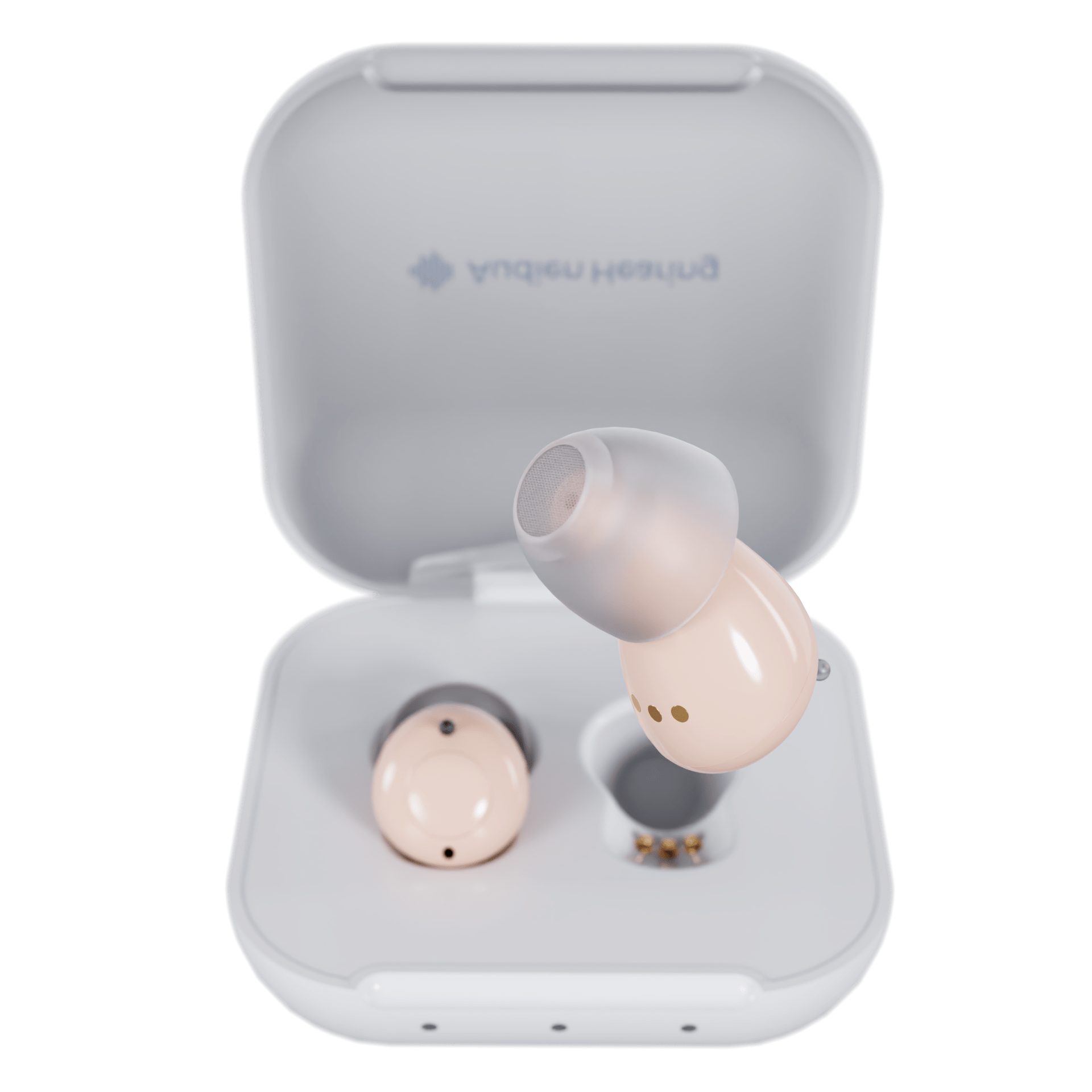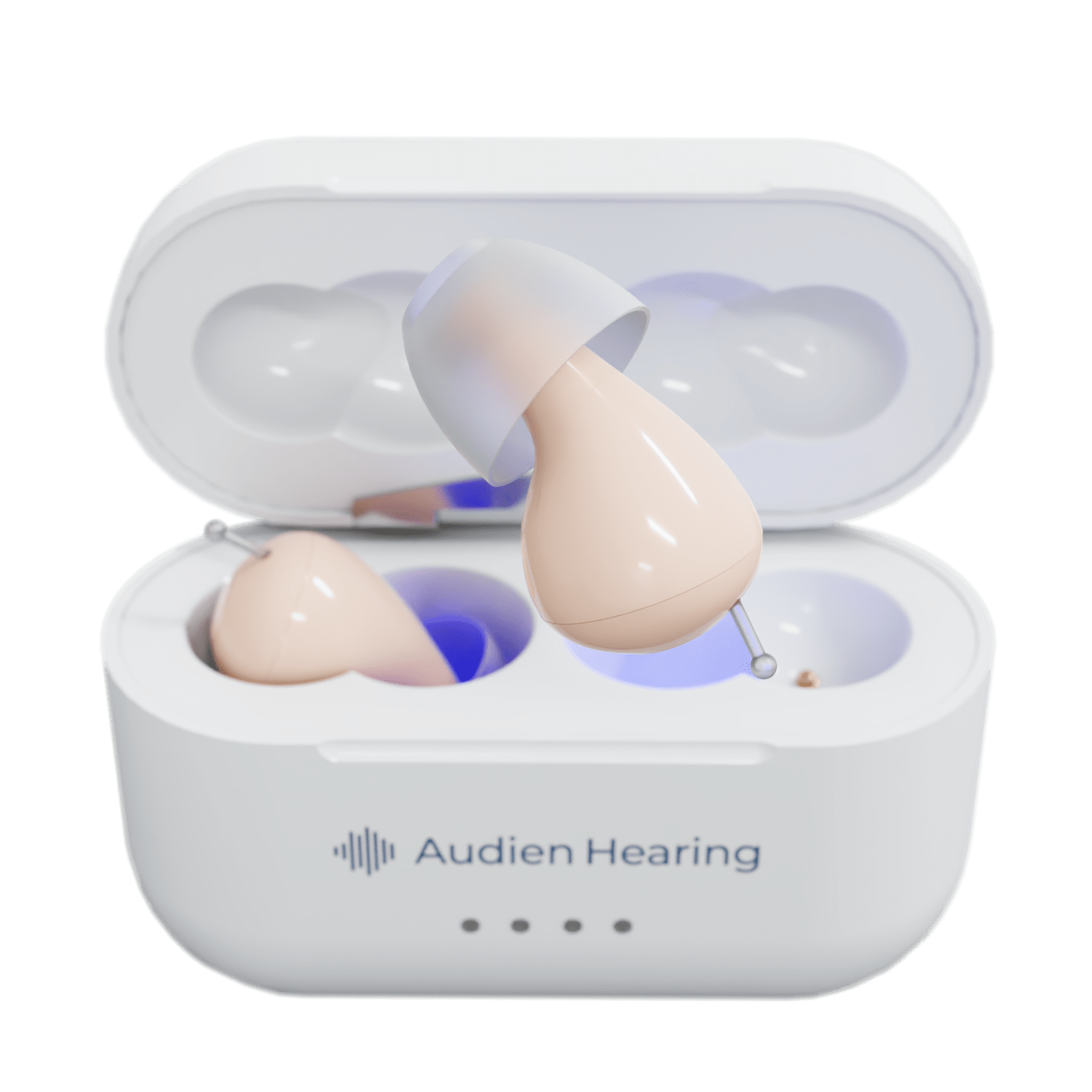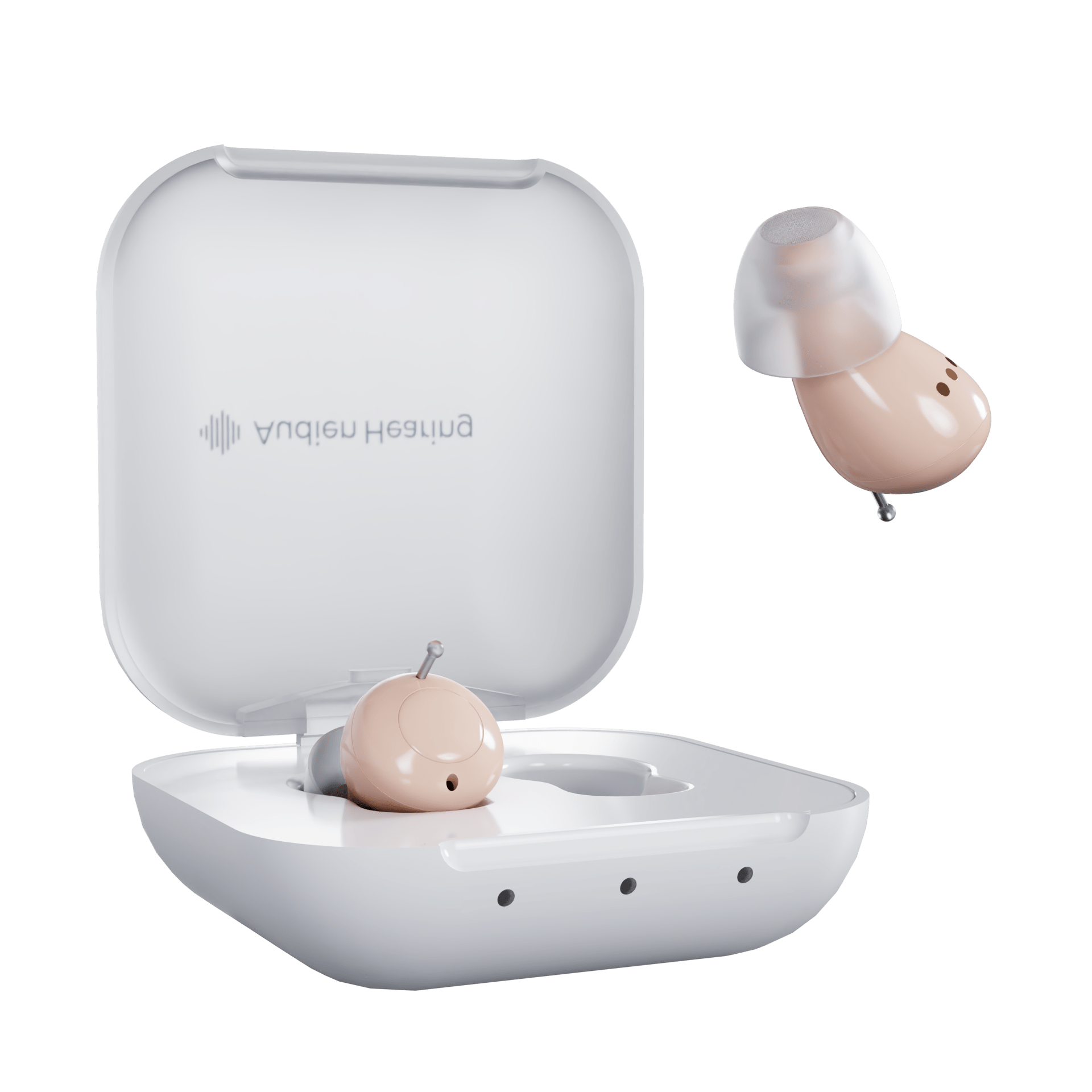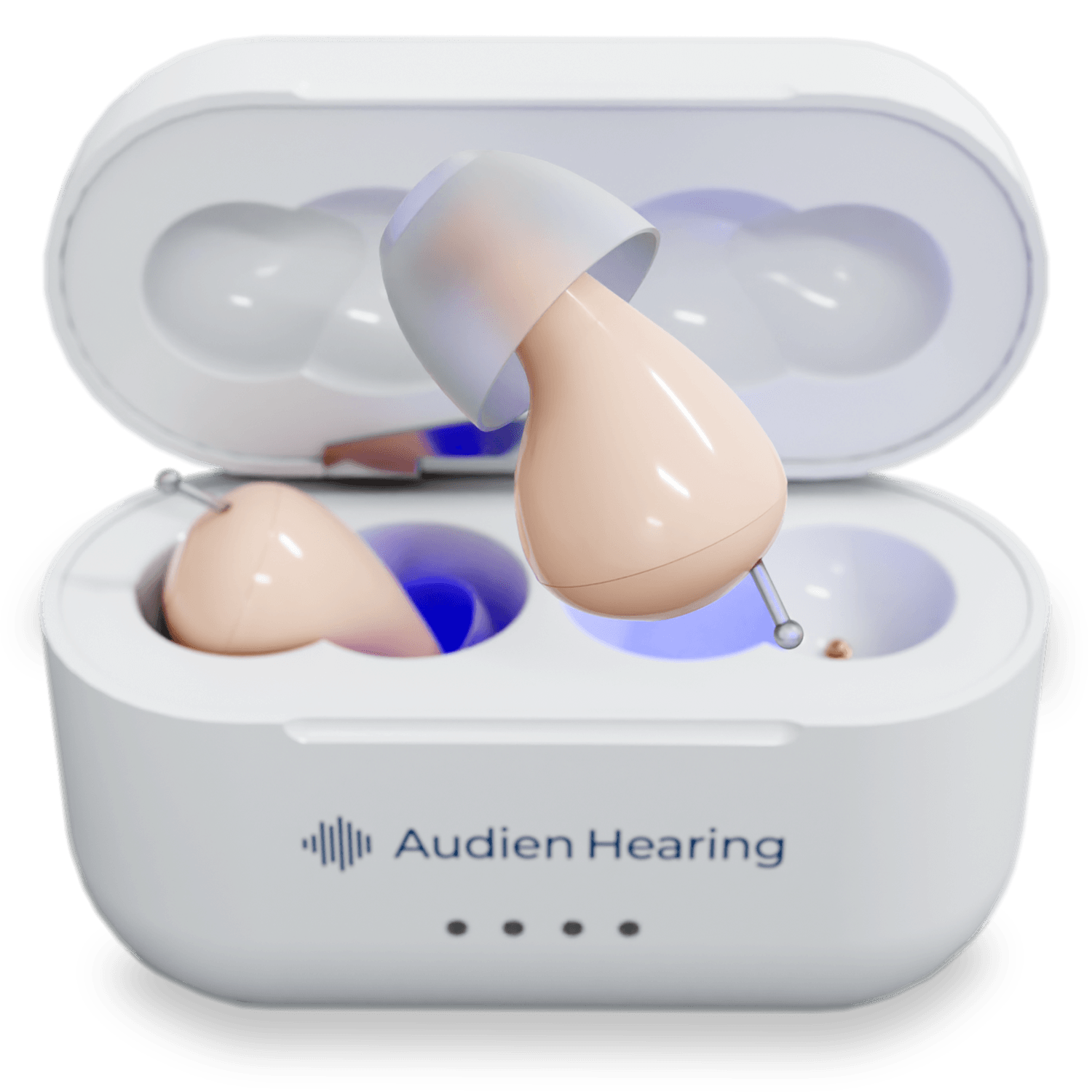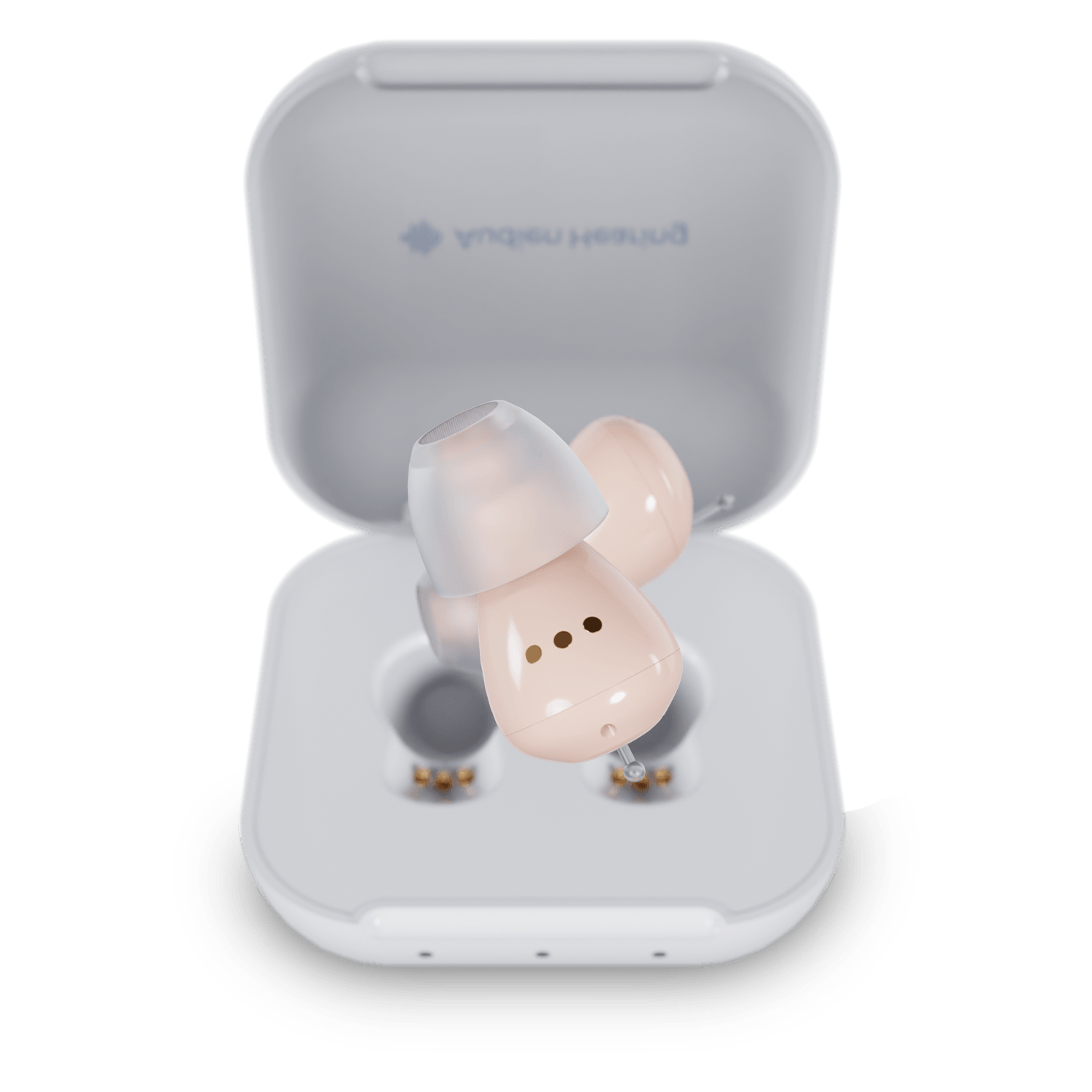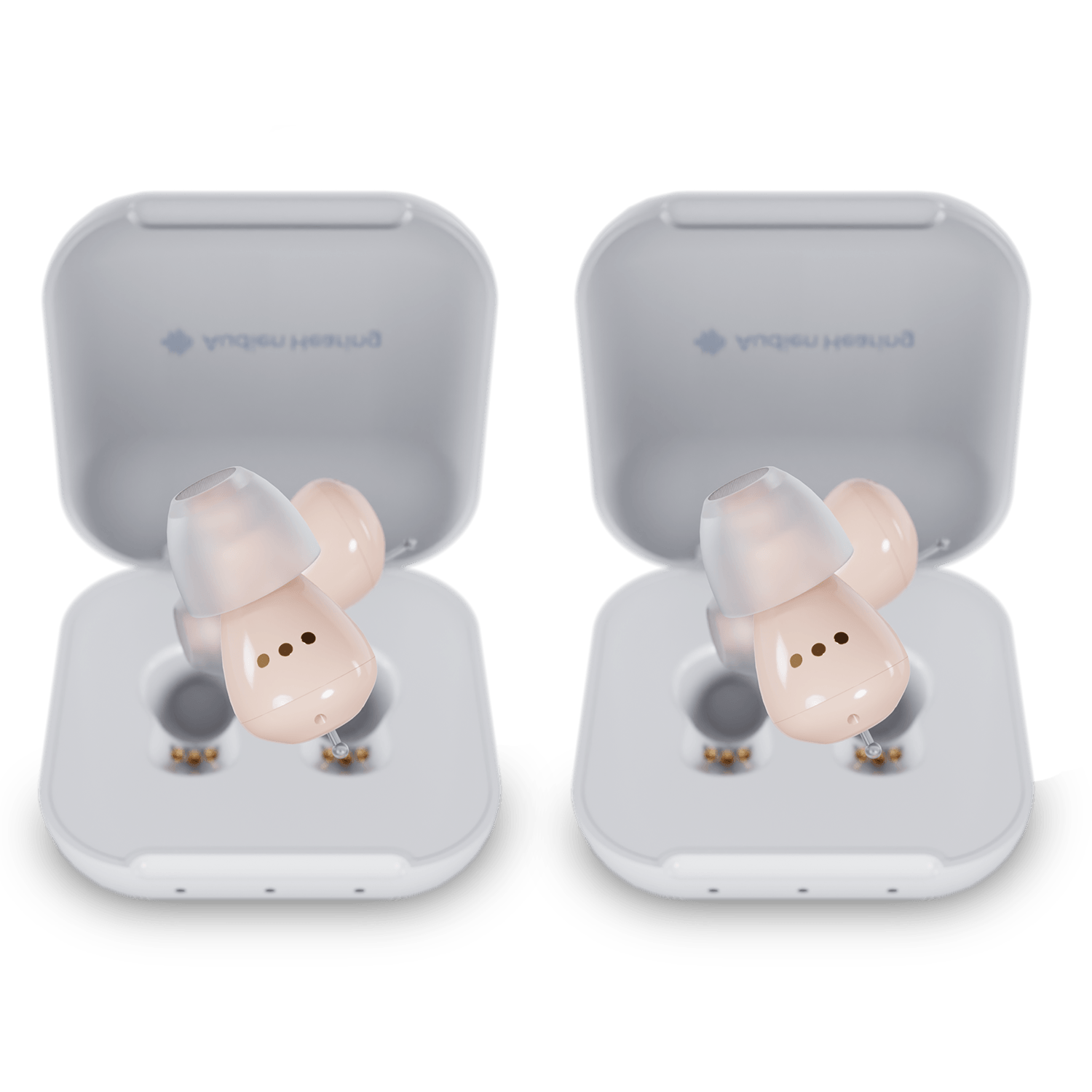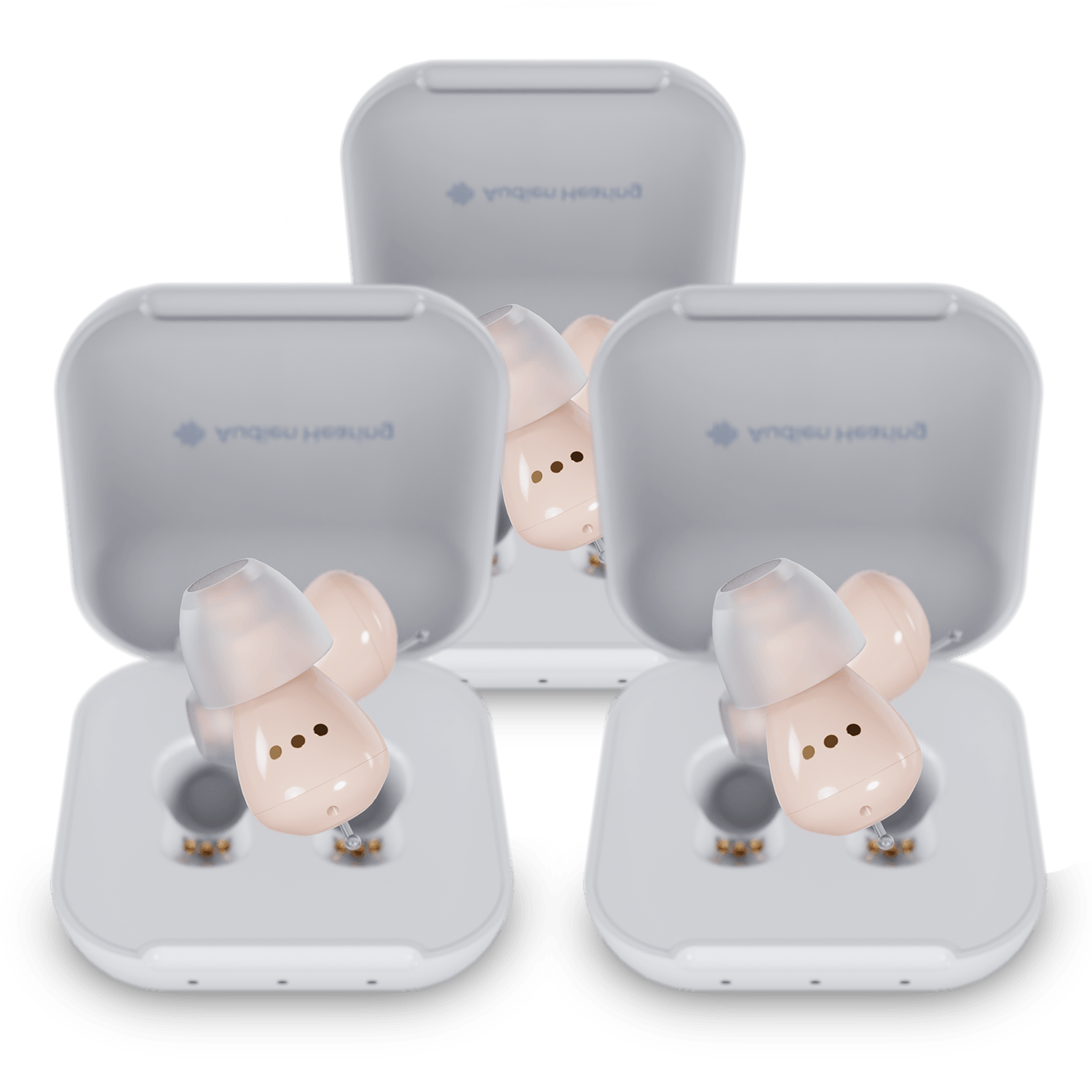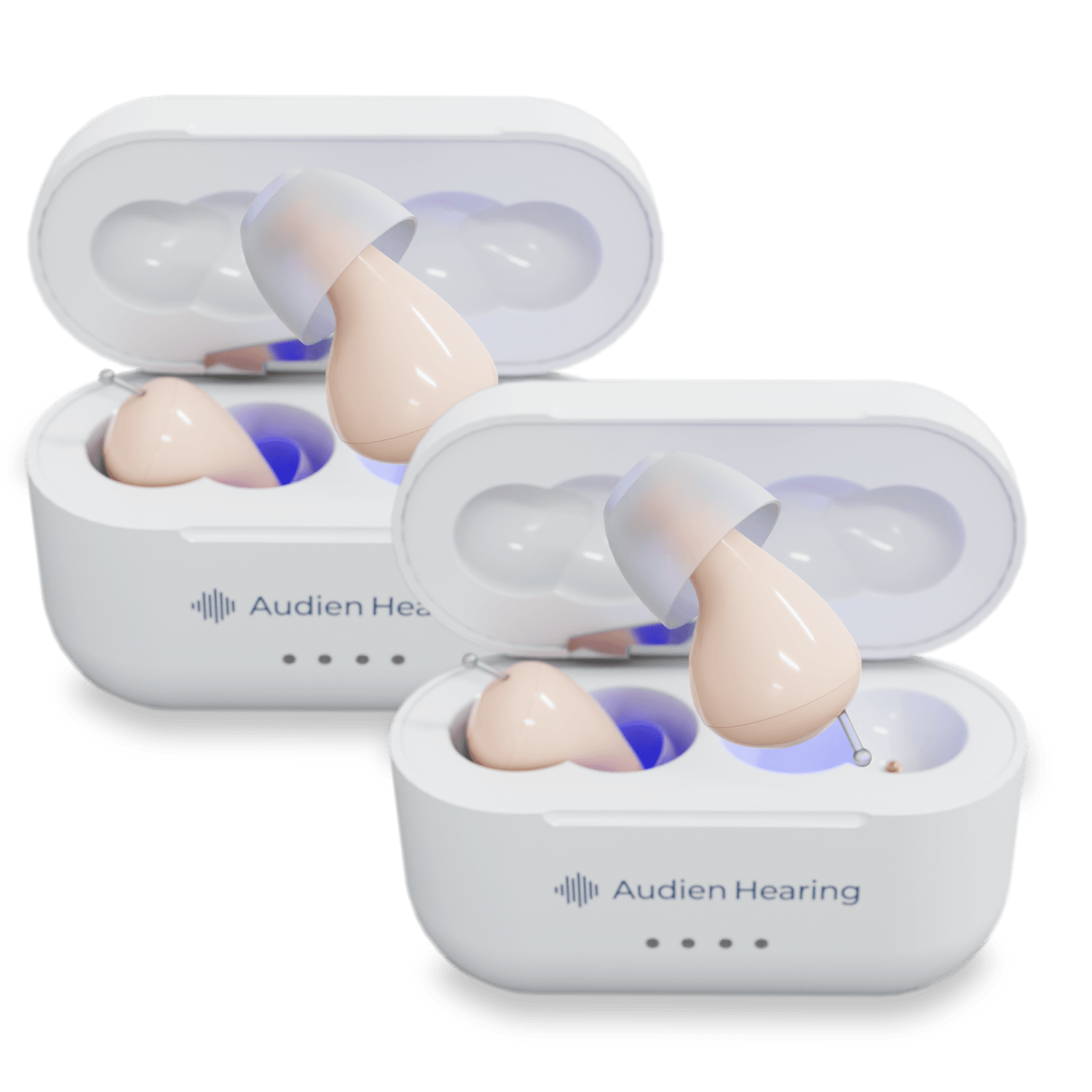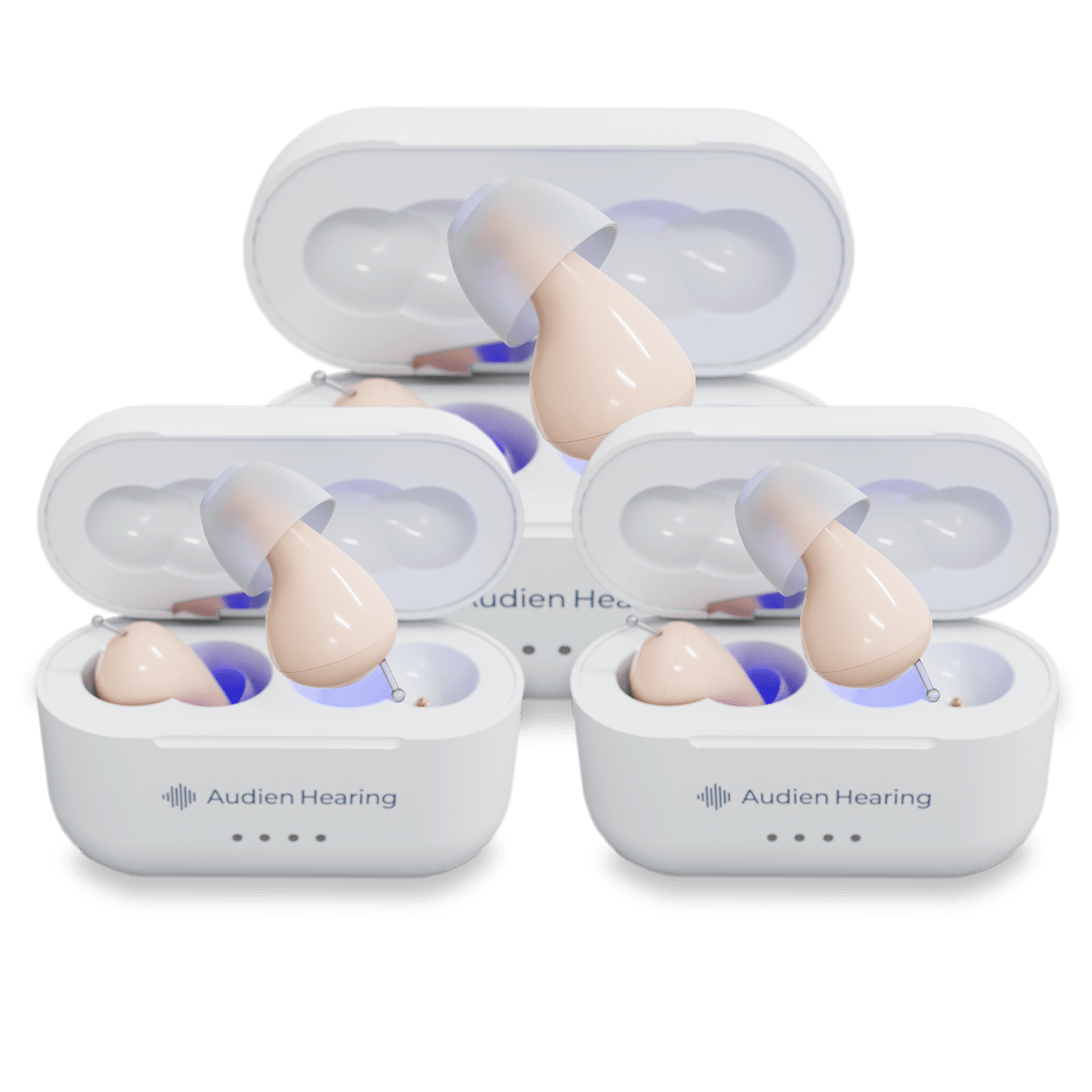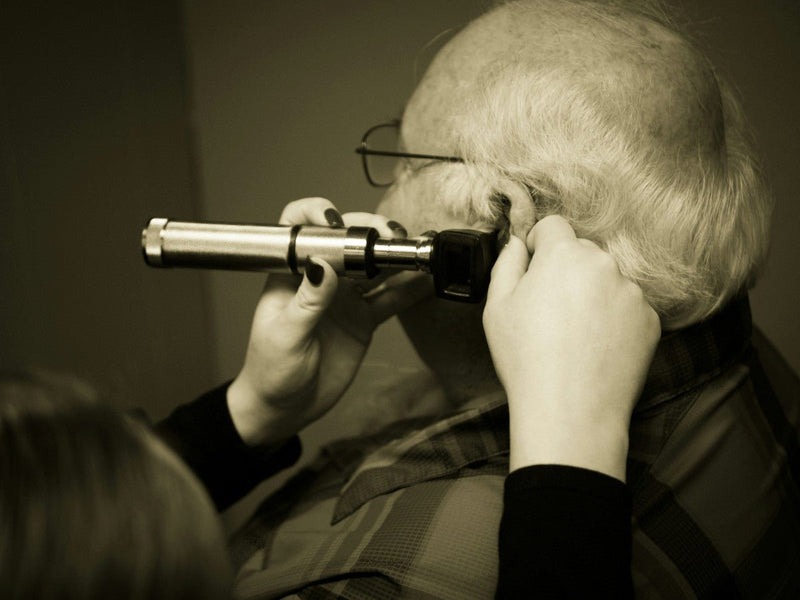Whether you’re struggling to keep up with conversations or constantly turning up the volume to the point others ask you to turn it back down, hearing loss gets in the way of living life to the fullest. But, hearing support is more within reach than it’s ever been for Americans.
Signia vs Jabra hearing aids are some of your best options of all the prescription-grade hearing aids at your fingertips. But which of these brands should you go with? It’ll come down to the features you want and the price you’re willing to pay.
Jabra’s Enhance lineup of devices starts at $995 for its entry-level devices for quieter situations, while its top-of-the-line Enhance Select 500 can cost $1,695. These are loaded with advanced features.
Signia’s hearing aids are more expensive, starting at $3,000 and quickly working up to $7,000 for more sophisticated technology. You get what you pay for, though, as this world-renowned manufacturer has earned a reputation for consistently producing top-notch quality.
We’ll take a closer look at Signia vs Jabra hearing aids below to help you understand which fits your needs. But if you determine your hearing loss isn’t profound enough to warrant a prescription model, you can consider over-the-counter (OTC) devices.
Audien Hearing’s affordable hearing aids start at $98, and even our advanced device for moderate hearing loss is only $689. You can buy hearing aids online today without a hearing test or in-person visit, and get the support you need on your own terms. Learn more below!
“I do find that these work as well, or maybe just slightly better than the most expensive Jabra aids I tried for almost 2 months.” - Randy
“I upgraded my hearing aids to the Atom Pro 2. These have so many features that make these a great buy. I would recommend these Atom Pro 2 hearing aids to any who needs them.” - T R
“I had a very good experience with their customer service not like JABRA, their customer service is very bad.” - John
Quick Comparison of Signia vs Jabra Hearing Aids
| Feature | Signia | Jabra Enhance |
|---|---|---|
| Type of Hearing Aid | Prescription only | Prescription OR Over-the-counter (OTC) |
| Best for | Mild to severe hearing loss | Mild to moderate hearing loss |
| How to Buy | Through hearing care providers | Through providers or online purchase |
| Fitting & Support | In-person fitting and adjustment; remote fine-tuning via TeleCare | Self-directed setup with remote audiology support (1–3 years based on package) |
| Bluetooth Streaming | BLE & ASHA support (select Android/iOS); LE Audio on newer models | Bluetooth LE Audio, hands-free calling, full iOS & select Android support |
| Technology Platform | Integrated Xperience (IX) with RealTime Conversation Enhancement | SoundScape™ with adaptive speech and noise balancing |
| Popular Models | Pure Charge&Go IX, Styletto IX, Silk Charge&Go IX | Enhance Select 50R, 300, 500 |
| Price Range (per pair) | $3,000 – $7,000 | $995 – $1,995 |
| Trial & Warranty | Trial and warranty terms vary by clinic (typically 1–3 years) | 100-day risk-free trial; warranty up to 3 years |
Overview of Jabra Hearing Aids
Jabra hearing aids are part of the GN Group, one of the largest hearing aid manufacturers in the world. These devices combine medical-grade hearing technology with a user-friendly interface that people find intuitive.
There are two distinct product lines under the brand - Jabra Enhance Select and Jabra Enhance Plus. We’ll just focus on the Enhance Select models for the sake of this conversation:
- Enhance Select 50R: A rechargeable receiver-in-canal (RIC) model priced around $995 per pair, depending on service tier. It includes Bluetooth streaming, app-based adjustments, and telehealth support.
- Enhance Select 100 / Enhance Select 200: Additional sound personalization features, background noise control, and a longer battery life. The top-tier option runs up to $1,995 per pair with three years of remote care, warranty, and loss protection.
You can actually order these devices online if you’re just dealing with mild to moderate hearing loss. Take a hearing test on the website, choose a service plan, and get your device shipped to your door. This OTC option is why you’ll often see Audien vs Jabra hearing aids compared.
That said, Jabra does offer prescription-grade devices as well. You can get these devices through Costco, for instance, at a Hearing Center. This way, you can get one-on-one support in person from a professional, taking some of the guesswork out of the shopping process.
Overview of Signia Hearing Aids
Signia is another premium hearing aid brand owned by WS Audiology, which also owns Widex and Rexton - two other popular brands in this space. The Signia name itself is fairly new, but it draws from a long, tried-and-true history of Siemens hearing technology.
These devices are designed for a full spectrum of hearing loss, but they’re entirely prescription - especially helpful for those with moderate to profound bearing loss. You cannot buy these hearing aids online yourself. You’ll have to go through a licensed hearing aid dispenser.
There are quite a few different models under the Signia hearing aid umbrella, but the key takeaway from this Signia vs Jabra hearing aids comparison is that these devices are expensive, albeit loaded with features:
- Styletto AX: A slim, rechargeable RIC model in a modern, earbud-inspired design. It has directional microphones, motion sensors, and Bluetooth streaming. Pricing varies by clinic but typically falls in the $4,000-$6,000 per pair range.
- Pure Charge&Go AX: A traditional RIC model focused on speech clarity in noise, offered in both rechargeable and battery-powered variants. Features include tap control, Android and iOS streaming, and app-based fine-tuning. Clinic prices vary by tech level, though they range from $1,550-$3,390 per pair.
- Insio Charge&Go AX: A custom in-the-ear model that’s fully rechargeable and discreet, tailored to individual ear shapes. As you can imagine, this level of personalization comes at a cost - somewhere in the range of $3,130-$4,040 per pair.
- Silk X: A small, non-custom CIC (completely-in-canal) model designed for instant fit. It’s nearly invisible for people who want a low-profile device without waiting on molds. The most affordable option in the Signia lineup at $1,100‑$2,200 per hearing aid.
These are just a few of the many devices you’ll find through Signia, but don’t let it overwhelm you. After all, you probably won’t be the one choosing your hearing aid.
All Signia devices must be professionally fitted. That means you’ll book an in-person hearing exam with an audiologist or hearing aid dispenser and get a recommendation after testing. Your provider handles programming along with regular adjustments and maintenance.
Jabra vs Signia Hearing Aids: Features, Support, Price, and More
You can see that there’s quite a bit of overlap between Signia vs Jabra hearing aids - but it’s the differences that matter most. They’re distinct in the way care is delivered and the user experience. This leads to discrepancies in cost as well.
Jabra’s Enhance Select line is built around remote support and OTC accessibility, despite offering prescription devices as well. On the other hand, Signia is exclusively prescription-grade. Your best bet is to consult a professional for one-on-one support towards the right device.
Technology Comparison
Let’s start our Jabra vs Signia hearing aids comparison by talking about technology.
The Jabra Enhance Select lineup runs on GN Hearing’s core signal processing platform, which is similar to what powers ReSound devices. The Enhance Select 500 includes Bluetooth LE Audio, Auracast support, hands-free calling for iOS and select Android phones, and TapControl for answering calls.
Their SoundScape™ technology dynamically adjusts gain and noise filtering based on your environment. You can fine-tune the settings through the Jabra Enhance app, which is how you’ll adjust treble/bass and environmental modes. It’s really intuitive.
Meanwhile, Signia’s prescription devices run on the brand’s proprietary Augmented Xperience (AX) platform. The system separates speech and background signals into two distinct processing paths for real-time clarity optimization.
The platform also supports features like Own Voice Processing 2.0, Auto EchoShield, and bandwidth up to 12 kHz. Devices like the Pure Charge&Go AX and Styletto AX integrate motion sensors so the device knows when you’re walking, sitting, or turning your head.
There are quite a few similarities in looking at the features of Signia vs Jabra hearing aids, though. Both brands offer rechargeability, binaural streaming, and app-based control. Signia has an edge as far as sophistication, for the most part.
Customer Support Model
This is perhaps the most significant difference between Signia vs Jabra hearing aids: the care model they operate through. There’s a bit of overlap here as well, as both offer prescription hearing aids. That means you’ll have to work with a licensed hearing aid device dispenser.
However, you can also buy the Jabra Enhance Select devices online after completing a hearing screening on the brand’s website or uploading your audiogram. From there, a licensed hearing professional remotely programs and ships the device your way.
You can request more fine-tuning through the Jabra Enhance app, phone, or video chat. Support is available for one to three years, depending on which service plan you choose.
On the other hand, Signia devices are dispensed and managed by audiologists or licensed dispensers. The fitting process begins with a full diagnostic hearing evaluation in a clinical setting. Devices are then selected, programmed, and verified using real-ear measurements.
All fine-tuning is handled in person, though remote adjustments may be possible via Signia TeleCare. Support is tied to the practice that provided the device, so long-term care can vary widely from one clinic to the next.
Ease of Use and Maintenance
As you can imagine, Jabra’s Enhance Select models are more intuitive in that you don’t have to leave your house to start hearing better. They’re shipped to you already pre-configured. In contrast, you’d have to go visit a facility to get your Signia device up and running.
Jabra’s rechargeable batteries last between 24-30 hours on a single charge depending on the model. The portable charging case provides additional charges and doubles as storage.
Similarly, you can get a full day of use out of Signia devices - sometimes, up to 36 hours on a single charge. Some include quick charging capabilities. Maintenance typically involves routine cleanings and occasional professional service, which will be done at an in-person clinic.
While Signia’s app supports some self-management (program switching, volume adjustments, etc.), most optimization will require you to connect with an expert.
Price and Accessibility
Jabra is hands down the more affordable choice in our Signia vs Jabra hearing aids comparison - but think more in terms of value for the money. You get what you pay for a lot of the time.
Jabra Enhance Select devices range from $995 to $1,995 per pair, depending on the model and care package. That price includes shipping, remote adjustments, warranty coverage, and a 100-day risk-free trial.
On the other hand, Signia hearing aids are prescription-only, so pricing is totally dependent on the clinic you purchase them through. In general, though, expect to pay between $3,000 and $7,000 per pair. This includes services, diagnostic testing, and post-fitting adjustments. Keep in mind that costs can vary based on insurance coverage and bundled service plans.
As far as accessibility, it’s fair to say Jabra has an edge there as well in that some of their devices are available online. But, that’s not necessarily an essential factor. You might actually prefer a more thorough care model that requires you to visit a professional in person.
That’s ultimately the key takeaway from this Jabra vs Signia hearing aids comparison. Hearing loss is very individualized, and you will need to take your level of hearing loss, your preferences, and your budget into account when making the decision between Signia vs Jabra hearing aids.
And remember - there are also devices out there for those who aren’t struggling with severe to profound hearing loss, but still struggle to keep up with conversations and need a little boost. Look no further than the best OTC hearing aids at Audien Hearing.
Audien Hearing Provides More Affordable, OTC Devices for Mild to Moderate Hearing Loss
A clinic-based prescription device isn't always necessary for many adults with mild to moderate hearing loss, depending on your overall health history and other medical needs. In fact, many of these individuals continue to suffer in silence because they can’t justify spending thousands on hearing support.
But you don’t have to wait for it to get bad to get help. Our stylish hearing aids aren’t a direct replacement for Signia vs Jabra hearing aids. Rather, they serve a different need: supporting subtle hearing loss that affects everyday life. This includes many people with mild to moderate hearing loss who are looking for the extra boost needed to hear more clearly.
These FDA-registered, rechargeable hearing aids are ready to use out of the box without a hearing test, prescription, or clinic visit. There’s a model for everyone:
- Atom One: The best hearing aid under $100. It’s a compact, in-ear model with treble/bass controls and up to 20 hours of battery life if you want simple, reliable support.
- Atom 2: One of the best hearing aids under $200. Four sound environment modes and an upgraded chip for more consistent clarity in dynamic settings. It’s still discreet and easy to wear all day.
- Atom Pro 2: At $289 per pair you get noise reduction technology, a built-in UV cleaning case, and a high-performance Comfort+ fit. It’s our most advanced in-ear option if you want more convenience and hygiene.
- Ion: A BTE model priced at $489 per pair. Bluetooth streaming and app-controlled volume and settings. You get more control without sacrificing simplicity.
- Ion Pro: Our top-tier model at $689 per pair, designed for users who want customizable hearing profiles, directional microphones, and the full range of app-based fine-tuning.
Each model includes lifetime support, free shipping, and a 45-day risk-free trial. We’ve helped more than a million adults so far and could do the same for you. Just get in touch to learn more about whether our devices are the right fit for you or not!
Final Words on Signia vs Jabra Hearing Aids
We hope this Signia vs Jabra hearing aids comparison has answered your questions about these two brands. They serve overlapping and different needs. While they both offer prescription devices, Jabra does have some OTC options. But not everyone needs either one!
We’re passionate about helping you find the right hearing support for your needs. We have more resources on topics like Eargo alternatives, Lexie hearing aid alternatives, Neebroo vs Audien hearing aids, and more.
Or, you can connect with our experts today to talk about your hearing needs one-on-one. We’ll help you determine whether you need more advanced care or if one of our OTC models makes sense for you. See how much easier hearing can be with Audien Hearing today!
